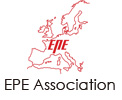INTERNATIONAL POWER ELECTRONICS CONFERENCE -ECCE ASIA-
IPEC-Hiroshima 2014
May 18th - 21st, 2014, International Conference Center Hiroshima, Japan
Industrial seminar will take place prior to the welcome reception of IPEC-Hiroshima 2014.
6 guest speakers from Japanese leading companies would introduce their latest research development, example of the commercialization, etc.
- Date:
- Sunday, May 18, 2014
- Venue:
- Phoenix Hall, International Conference Center Hiroshima
- Time:
- 14:00 – 17:00 (Registration open: 13:30)
- Language:
- English
- Fee:
- Free
NEDO’s Power Electronics Projects and Recent Activities
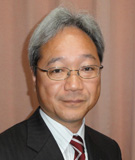
Mr. Keiichiro Yusu
Electronics, Materials Technology and Nanotechnology Department,
New Energy and Industrial Technology Development Organization
(NEDO)
After receiving the M.E. from the Graduate School of Engineering of Kyushu University in 1987, He joined Toshiba Corporation’s Research and Development Center and studied phase change optical recording technology. He started working on the development of a perpendicular magnetic recording medium in 1995, and in 2004 He was put in charge of HD DVD technology development for a next-generation optical disk. He subsequently joined NEDO, where He has been in charge of a power electronics development project since 2012. He received the 61st OHM Technology Award in 2013.
Abstract:
NEDO is Japan’s largest public organization promoting research and development of energy, environmental and industrial technologies. One of NEDO’s most important missions is to promote technological development to realize a low carbon emission society, and since 1998 it has undertaken various projects to develop next- generation power electronics for renewable energy, railway system, electric vehicle, electric power system and other applications in accordance with this mission. In recent years, NEDO has focused on the development of power devices and inverter systems based on silicon carbide. For example, the Novel Semiconductor Power Electronics Project for a Low Carbon Emission Society started in 2010 succeeded in developing a high quality six inch SiC single crystal wafer in 2012. He will talk about this project during his presentation.
>> page top
Power Electronics Technologies for the Sustainable Society with the Joy and Freedom of Mobility
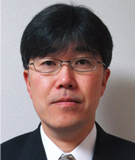
Mr. Naritomo Higuchi
Honda R&D Co. Ltd.
Profile:
- 1993
- Join Honda R&D Co. Ltd.,
- 1996-2014
- Involved with a lot of HEV (Hybrid Electric Vehicle) research and development projects
- 1999-2000
- Sent to the Institute of Systems Research of University of Maryland as a member of Honda visiting scientist program
- 2007-2008
- Project leader of a Kinetic Energy Recovery System for the Formura-1 racing car
- 2009-
- Project leader of electric drivetrain for 2014 ACCORD Plug-Inand ACCORD Hybrid
- 2012-
- Responsible for the design of the control devices of EVs, HEVs and FCEVs (Fuel Cell EVs).
Abstract:
As a result of an intensive effort to reduce pollutant of exhaust emissions, the main environmental concern regarding automobiles has shifted from air pollution to global warming caused by CO2. In this decade, the electrification of the vehicle power plant has become popular as the most practical technology for reducing CO2 emission. Consequently, the electrification now is vital for a sustainable society, and also provides a joy of driving which is a fundamental desire of people. The importance of the development of power electronics technology will be widely recognized in the future.
During this seminar, Honda's wide range of electrification technologies and perspective on future personal mobility are discussed.
>> page top
A large capacity power converter and applications for traction power supply systems
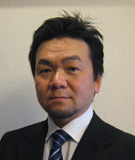
Dr. Shinzo Tamai
Toshiba Mitsubishi-Electric Industrial Systems Corporation
Shinzo Tamai was born in Ehime, Japan, in 1958. He received the B.S. and M.S. in electric engineering from Tokyo Institute of Technology, Tokyo, Japan, in 1981 and 1983, respectively. He joined Mitsubishi Electric Corporation in 1983. In 2003, he joined Toshiba Mitsubishi-Electric Industrial Systems Corporation. He received the Ph.D. degrees from Tokyo Institute of Technology, in 2004.
Since 1983, he has been engaged in research and development of ac motor drives, UPS, FACTS, HVDC systems.
Dr. Tamai served as the President of the IEE Japan Industry Applications Society from May 2010 to May 2012.
Abstract:
Electric railway systems are spread worldwide. In Japan, the Shinkansen has been operational since 1964, the high-speed rail network is spreading. In urban areas, commuter train networks have been provided extensively. Change of the electric load power caused by the increase in the number of trains and introduction of the high speed train which is possible to operate regenerative braking, enlarges the voltage variation of the electric power system. In order to improve the power system reliability, the power converters for traction power supply systems are introduced and they control voltage fluctuation of the power system.
>> page top
Advance in Power Electronics Technologies and YASKAWA’s Challenge
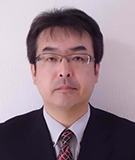
Dr. Hidenori Hara
Yaskawa Electric Corporation
Hidenori Hara received his B.S., M.S., and Ph.D. degrees in electrical engineering from Nagasaki University in Japan, in 1995, 1997, and 2006, respectively. He joined the Development Center, Yaskawa Electric Corporation, Kitakyushu City, Japan, in 1997. In 2011, he moved to Power Electronics Group of Corporate R&D Center, Yaskawa Electric Corporation. He played the leading role in commercialization of the world first matrix converter.
Since 2013, he has been working as a manager of Power Electronics Team. His research interests include power electronics, matrix converter drive, and EV motor drive applications.
Abstract:
Power electronics has contributed to the prosperity of today's worldwide economy. Yaskawa has applied new power electronics technologies in our various AC motor drive products. This presentation describes advancement of the power electronics through the introduction of these products.
Recently, new power semiconductor devices such as SiC and GaN are attracting considerable attention for the further advancement of power electronics technologies. They provide benefits of lower losses, higher switching operation, and high temperature operation in the power conversion system. Prototypes introduced in this presentation will prove these benefits, contributing to conservation of the global environment.
>> page top
Trend of the Power Electronics Products Applying the SiC Power Devices in Japan
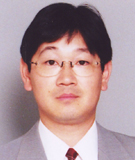
Dr. Yasushi Matsumoto
Fuji Electric Co., Ltd.
Dr. Matsumoto received the B.E. degree and the M.E. degree in electrical engineering from Tokyo Institute of Technology in 1988 and 1990 respectively, and the Ph.D. degree in electrical engineering from Yokohama National University in 2002. Since 1990, he has been with Fuji Electric Co., Ltd. in research and development. He is currently a General Manager in Core Technology Department of Power Electronics Technology Center of Fuji Electric Co., Ltd. He is also a Visiting Associate Professor of Nagaoka University of Technology and of Yamanashi University. His research interests are AC motor drives, power converters, power semiconductors and their applications. Dr. Matsumoto is a senior member of Institute of Electrical Engineering of Japan (IEEJ) and a member of Institute of Electrical and Electronics Engineering (IEEE).
Abstract:
The performance of the power semiconductor using Si which is in use now has been approaching the limit of the operation temperature, voltage and frequency. Therefore, research of the power semiconductors using the wide band gap materials, such as SiC and GaN, is progressing. In this seminar, He would explain the trend of the SiC power devices including chips and packages. Also, He would show advantages of the power electronics products applying hybrid modules which consist of Si-IGBTs and SiC-SBDs and/or all-SiC modules which consist of SiC-MOSFETs and SiC-SBDs.
>> page top
Lithium ion batteries application in traction power system
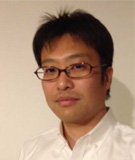
Mr. Hirotaka TAKAHASHI
Senior Engineer
Power Supply Systems Dep.
Transport Manegement & Control Systems Div.
Hitachi,Ltd., Rail Systems Company
He joined Hitachi,Ltd.,Kokubu Works in 1991.
Since then, he has been working in Kokubu works the power supply system design section for railway systems. In 2001 he joined headquarters managing and executing system integration of power supply system for railway systems section.
He is a project team leader of "Implementation Project Team of Li-ion battery application in traction power supply system" (FY2003– FY2015)
Abstract:
In 2004, Hitachi developed a regenerative energy storage system ("B-CHOP") using the automotive lithium-ion batteries. The system underwent successful field trials on the Seishin-Yamate Line of the Kobe City Subway, and in 2006 a commercialized version was delivered to the line’s Itayado substation. The system went global marketplace in 2011 with delivery to Line 9 of the Seoul Metro in South Korea, and is now operating well there.
He will present topics related to technologies of lithium ion batteries application in traction power system.
>> page top






